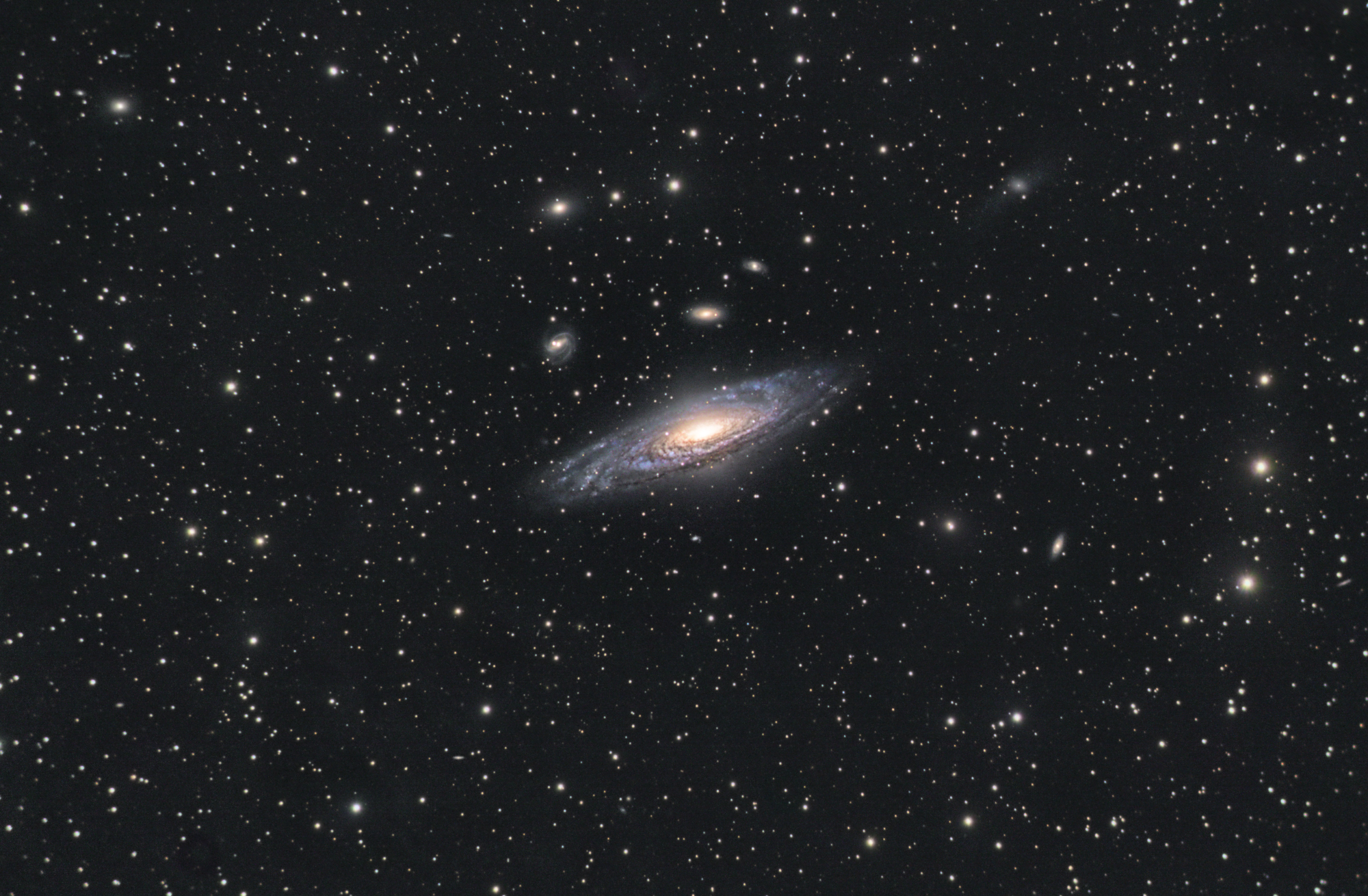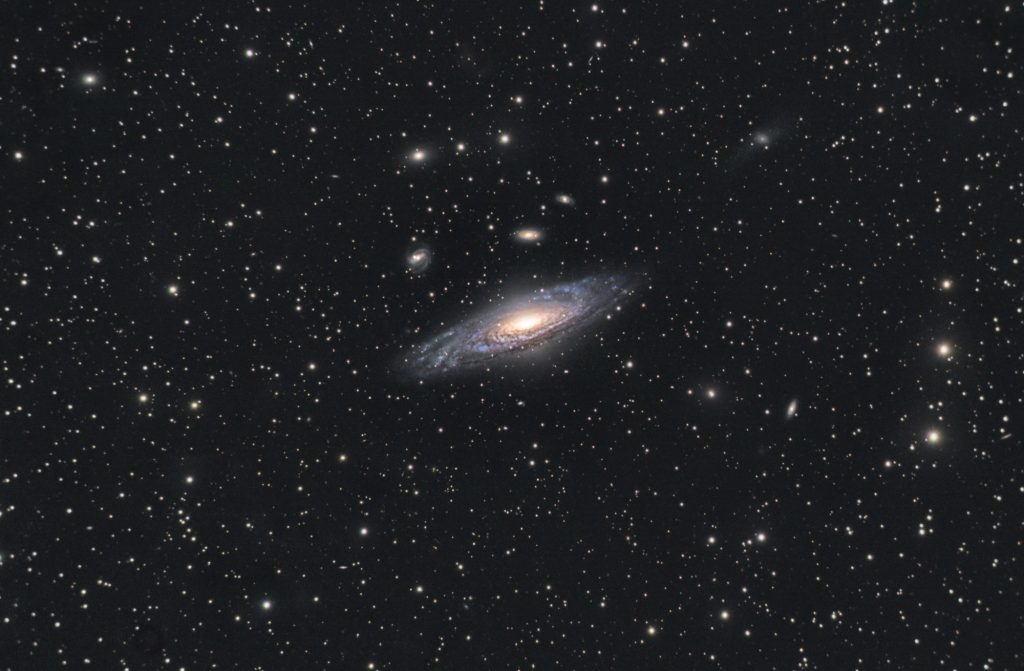Optik / Mount: 12″ACF f7, Alt-5 TeenAstro
Camera / Filter: ZWO ASI 6200 MM Pro Mono
Astrodon LRGB true colors 5h
Date 20.09.2022
NGC 7331, also known as Caldwell 30, is an unbarred spiral galaxy about 40 million light-years away in the constellation Pegasus. It was discovered by William Herschel in 1784. NGC 7331 is the brightest galaxy in the field of a visual grouping known as the NGC 7331 Group of galaxies. In fact, the other members of the group, NGC 7335, 7336, 7337 and 7340, lie far in the background at distances of approximately 300-350 million light years.
The galaxy appears similar in size and structure to the Milky Way, and is sometimes referred to as “the Milky Way’s twin”. However, discoveries in the 2000s regarding the structure of the Milky Way may call this similarity into doubt, particularly because the latter is now believed to be a barred spiral, compared to the unbarred status of NGC 7331. In spiral galaxies the central bulge typically co-rotates with the disk but the bulge in the galaxy NGC 7331 is rotating in the opposite direction to the rest of the disk. In both visible light and infrared photos of the NGC 7331, the core of the galaxy appears to be slightly off-center, with one side of the disk appearing to extend further away from the core than the opposite side.@wiki
NGC 7331, également connue sous le nom de Caldwell 30, est une galaxie spirale non barrée située à environ 40 millions d’années-lumière dans la constellation de Pégase. Elle a été découverte par William Herschel en 1784. NGC 7331 est la galaxie la plus brillante du champ d’un regroupement visuel connu sous le nom de groupe de galaxies NGC 7331. En fait, les autres membres du groupe, NGC 7335, 7336, 7337 et 7340, se trouvent loin à l’arrière-plan, à des distances d’environ 300 à 350 millions d’années-lumière.
La galaxie semble similaire en taille et en structure à la Voie lactée, et est parfois appelée “la jumelle de la Voie lactée”. Cependant, les découvertes faites dans les années 2000 concernant la structure de la Voie lactée peuvent remettre en question cette similitude, notamment parce que cette dernière est maintenant considérée comme une spirale barrée, par rapport au statut non barré de NGC 7331. Dans les galaxies spirales, le bulbe central est généralement en rotation conjointe avec le disque, mais le bulbe de la galaxie NGC 7331 tourne dans le sens opposé au reste du disque. Sur les photos de la galaxie NGC 7331 prises à la fois en lumière visible et en infrarouge, le noyau de la galaxie semble être légèrement décentré, un côté du disque semblant s’étendre plus loin du noyau que le côté opposé.@wiki

